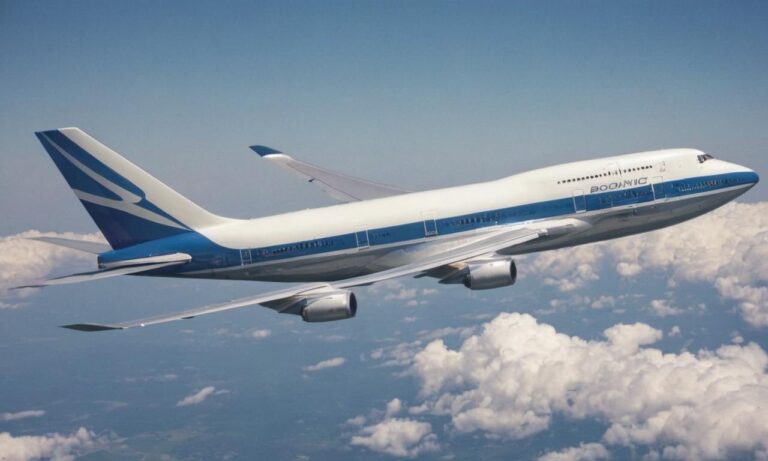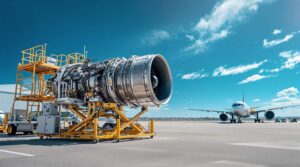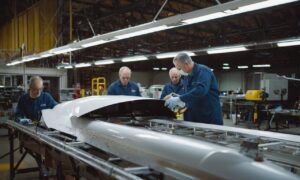Have you ever wondered about the incredible speeds at which a Boeing 747, one of the most iconic and recognizable airplanes in the world, can soar through the skies? The Boeing 747, often referred to as the “Queen of the Skies,” has a fascinating history and impressive performance capabilities that have captured the imagination of aviation enthusiasts worldwide.
Designed and built by Boeing, the 747 is a large, long-range commercial aircraft that first took to the skies in 1969. Over the decades, this majestic aircraft has undergone various upgrades and modifications, but its ability to cruise at remarkable speeds remains a defining feature.
The Need for Speed: Cruising Velocity of a Boeing 747
When it comes to measuring the speed of an aircraft, the term “cruising speed” is commonly used. For a Boeing 747, its cruising speed typically hovers around 560 miles per hour (900 kilometers per hour). This impressive velocity allows the aircraft to cover vast distances efficiently, making it a popular choice for long-haul flights connecting continents.
The cruising speed, however, is just one aspect of the 747’s speed capabilities. During takeoff, the aircraft accelerates rapidly to achieve the necessary lift for ascent. Takeoff speeds for a Boeing 747 can range from 160 to 180 miles per hour (260 to 290 kilometers per hour), showcasing the powerful engines and aerodynamic design that contribute to its performance.
The Power Behind the Speed: Engines and Technology
At the heart of the Boeing 747’s impressive speed are its powerful engines. The specific model of engines can vary among different versions of the aircraft, but they are all designed to provide the necessary thrust to propel the massive plane through the air.
The most common engines found on the Boeing 747 are the General Electric CF6, Pratt & Whitney JT9D, and Rolls-Royce RB211. These engines incorporate advanced technology, including high-bypass turbofans, to enhance fuel efficiency and reduce environmental impact while ensuring optimal performance.
Aerodynamics and Design: Maximizing Efficiency
The aerodynamic design of the Boeing 747 plays a crucial role in achieving and maintaining high speeds. The iconic hump on the upper deck of the aircraft serves both functional and aesthetic purposes. It houses the cockpit, providing an elevated position for better visibility, and contributes to the overall aerodynamic efficiency of the plane.
The wingspan, winglets, and fuselage design are all carefully engineered to minimize drag and optimize lift, allowing the Boeing 747 to reach its impressive cruising speed with efficiency and stability.
Conclusion: A Marvel of Modern Aviation
In conclusion, the question “how fast can a Boeing 747 fly” unveils a world of engineering marvels, technological sophistication, and aerodynamic ingenuity. With its cruising speed of approximately 560 miles per hour, this iconic aircraft continues to be a symbol of the advancements achieved in the field of aviation.
Whether you are a frequent flyer or an aviation enthusiast, understanding the speed capabilities of the Boeing 747 adds a new dimension to the appreciation of air travel. As we marvel at the Queen of the Skies streaking across the horizon, we witness the culmination of decades of innovation and expertise that make the Boeing 747 a timeless icon in the history of flight.
Unlocking the Sky: Supersonic Alternatives
While the Boeing 747 impresses with its cruising speed, the aviation industry has explored supersonic alternatives that redefine the boundaries of air travel. Supersonic aircraft, such as the Concorde in the past and potential future successors, can achieve speeds exceeding Mach 1, breaking the sound barrier and significantly reducing travel time for select routes.
Supersonic Challenges and Opportunities
Developing and operating supersonic aircraft come with unique challenges, including sonic booms, fuel efficiency, and environmental concerns. However, ongoing research and advancements in materials and engine technology aim to address these challenges, potentially opening up a new era of faster-than-ever air travel.
The Role of Materials: Lightweight and High-Strength
Materials used in aircraft construction contribute significantly to their performance. The Boeing 747 incorporates lightweight yet robust materials to ensure strength while minimizing overall weight. Advancements in composite materials, carbon fiber technology, and alloys continue to drive innovation in aircraft manufacturing, enhancing both speed and fuel efficiency.
Materials in Aviation: Innovations and Sustainability
From bio-composites to recycled materials, the aviation industry is exploring sustainable alternatives to reduce its environmental footprint. The integration of eco-friendly materials not only aligns with global sustainability goals but also influences the design and performance of aircraft, impacting their speed and efficiency.
Frequently Asked Questions
| Question | Answer |
|---|---|
| 1. How fast can supersonic aircraft travel? | Supersonic aircraft can achieve speeds exceeding Mach 1, which is approximately 767 miles per hour (1,235 kilometers per hour) or faster. |
| 2. Are there plans for a new generation of supersonic passenger planes? | Yes, several companies are actively working on developing new supersonic passenger planes, aiming to revive high-speed air travel with improved efficiency and reduced environmental impact. |
| 3. What role do aerodynamics play in aircraft speed? | Aerodynamics is crucial for minimizing drag and maximizing lift, directly influencing an aircraft’s speed. Efficient aerodynamic design contributes to optimal performance during various flight phases. |






